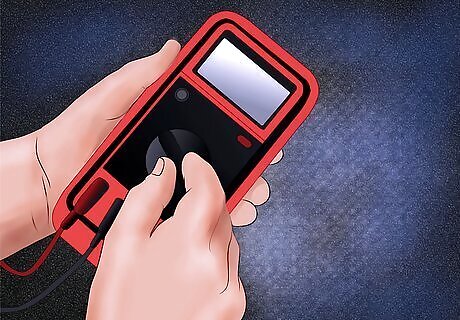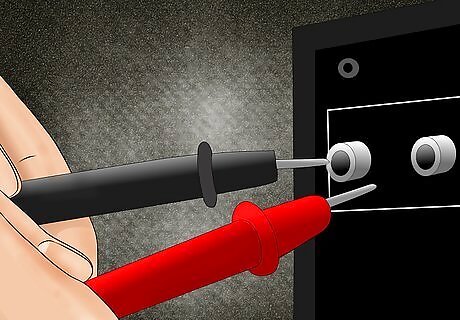
views

Purchase a multimeter. A multimeter is a handheld device for measuring electrical current, resistance, or voltage. Multimeters are available in either digital or analog models, and can sport a variety of different features. The important consideration when choosing a meter to measure DC offset is the lowest available voltage range. Because DC offset readings will be quite small (usually under 100 mV), you need a meter with a small range (sensitivity) so that the readings will register correctly. A meter with a 200 or 400 mV range is ideal, but a range of 2 V will also work.

Prepare the amplifier to be measured. To achieve an accurate DC offset reading, you need to follow a few set-up steps. Begin by disconnecting the speakers. As an alternative, you can take the readings from the "B" or "remote" terminals and set the speaker control switch accordingly. Set the amplifier's input selector switch to an unused position such as "Aux." Do not set it to "Phono." Set the volume dial to minimum, the tone dials in the middle position, and the balance dial in the center. Turn on the amplifier and let it sit for at least 10 minutes before taking a reading.

Set the multimeter to the appropriate mode. The meter should be set to measure DC voltage (not current). Set the range of the meter to its smallest setting (200 mV is ideal); if you have an auto-ranging meter you won't need to perform this step. Make sure the test leads are plugged into the jacks used for measuring voltage.

Touch the multimeter's test leads to the amplifier's speaker terminals. To measure the amp's DC offset, begin by touching the black test lead to the negative speaker terminal. Next, touch the red test lead to the positive speaker terminal. Hold both leads in place while looking at the reading on the multimeter's face. After taking the reading, reconnect the speakers and set the controls back in their desired positions.

Analyze the result of your reading. The ideal amount of DC offset is 0, which results from a perfectly balanced AC sine wave. In reality, an offset between 0 and 20 mV is very good. An offset between 20 and 50 mV is slightly higher than the ideal range, but the distortion caused will barely be audible. A range from 50 to 100 mV will begin to cause noticeable degradation of the audio quality, while an offset over 100 mV may cause permanent damage to your speakers.

















Comments
0 comment